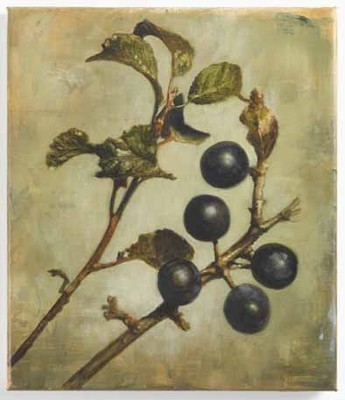Christopher Orr
27 Oct - 15 Dec 2007
CHRISTOPHER ORR
Hauser & Wirth is proud to present an exhibition of new paintings by CHRISTOPHER ORR. His intriguing, meticulously painted pictures are derived entirely from existent media. Images from vintage magazines, Ladybird storybooks, science textbooks, Old Master paintings, newspaper articles and slides that the artist has found are all sources of inspiration. Orr’s earlier works, his miniaturist dark paintings borrow the Romantic landscapes and painterly styles of Caspar David Friedrich and J. M. W. Turner. Tramping insensibly through these sublime landscapes are figures that look to have stepped straight out of the 1950s, their dress and behaviour utterly ill-suited for where they now belong.
The new works are larger and looser than their predecessors, and in many ways more confident in their handling of surreal subject matter. Orr has reduced and simplified his images, often removing the drama found in his source material, to create subjects that are at once banal and arcane. These works possess a painterly rather than narrative tension. They test the level of detail a painting must undergo to be finished, their brush marks evident, lyrical and uneven. Pigment has been thinly applied and at times scratched off to reveal bare canvas; ochre grounds beneath the figurative paintwork are lambent, showing underneath and between the surface brush strokes and stealing a part in the action of the scenes. Orr continually explores the manipulation of images from one medium into another. He tests the objectivity of the scientific depictions, photographs, diagrams and paintings that he uses; their eclecticism of style and content saturate Orr’s works with the competing perspectives and mentalities of different eras, fostering an enchanted state.
The works in this exhibition sit cryptically with each other without expressing any common theme. Instead they relate to previous paintings by the artist, finding aesthetic links between uncommon subjects. The arrangement of round black berries of a plant, for instance, recalls the three-dimensional models of chemical elements that are studied by the protagonists of his earlier paintings. In another painting, two boys walk tentatively into an abstracted world of paint that represents a more elemental version of the Romantic abysses skirted by Orr’s previous heroes. One of the boys clutches a translucent sphere in his hand as though it offers spiritual guidance for the journey ahead. Spheres crop up again and again in Orr’s works as objects of fascination and wonder. Their meaning is elusive to viewers of the work, a symbol of a world that lies beyond their grasp.
Hauser & Wirth is proud to present an exhibition of new paintings by CHRISTOPHER ORR. His intriguing, meticulously painted pictures are derived entirely from existent media. Images from vintage magazines, Ladybird storybooks, science textbooks, Old Master paintings, newspaper articles and slides that the artist has found are all sources of inspiration. Orr’s earlier works, his miniaturist dark paintings borrow the Romantic landscapes and painterly styles of Caspar David Friedrich and J. M. W. Turner. Tramping insensibly through these sublime landscapes are figures that look to have stepped straight out of the 1950s, their dress and behaviour utterly ill-suited for where they now belong.
The new works are larger and looser than their predecessors, and in many ways more confident in their handling of surreal subject matter. Orr has reduced and simplified his images, often removing the drama found in his source material, to create subjects that are at once banal and arcane. These works possess a painterly rather than narrative tension. They test the level of detail a painting must undergo to be finished, their brush marks evident, lyrical and uneven. Pigment has been thinly applied and at times scratched off to reveal bare canvas; ochre grounds beneath the figurative paintwork are lambent, showing underneath and between the surface brush strokes and stealing a part in the action of the scenes. Orr continually explores the manipulation of images from one medium into another. He tests the objectivity of the scientific depictions, photographs, diagrams and paintings that he uses; their eclecticism of style and content saturate Orr’s works with the competing perspectives and mentalities of different eras, fostering an enchanted state.
The works in this exhibition sit cryptically with each other without expressing any common theme. Instead they relate to previous paintings by the artist, finding aesthetic links between uncommon subjects. The arrangement of round black berries of a plant, for instance, recalls the three-dimensional models of chemical elements that are studied by the protagonists of his earlier paintings. In another painting, two boys walk tentatively into an abstracted world of paint that represents a more elemental version of the Romantic abysses skirted by Orr’s previous heroes. One of the boys clutches a translucent sphere in his hand as though it offers spiritual guidance for the journey ahead. Spheres crop up again and again in Orr’s works as objects of fascination and wonder. Their meaning is elusive to viewers of the work, a symbol of a world that lies beyond their grasp.

